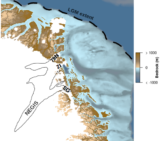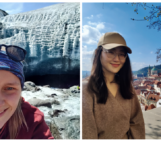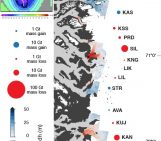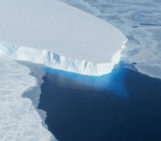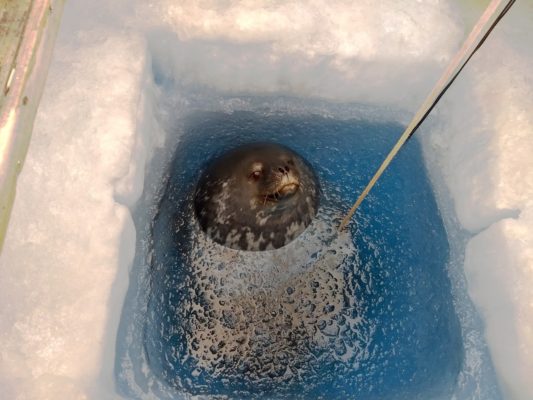
The Weddell Seal pops his head up through the hole in the floor of the shipping container… for the fourth time today. The shipping container is one of several making up our field camp on sea ice, 40 km from Scott Base – situated on Ross Island, in the south-western Ross Sea. Today I talk about the sub-ice platelet layer, which provides the base for a rich marine environment.
Generating supercooled water from melted ice shelves
This water is as cold as the ocean naturally gets. So cold that, through a quirk of the pressure effect, it arrives at our site ‘supercooled’. In other words, it’s cold enough that it should have frozen, but so far has remained liquid. The only way this can happen is if the ocean contains water that has recently been melted from the base of the nearby Ross Ice Shelf – a huge floating platform of slowly-flowing ice through which 20% of Antarctica’s ice drains as it advances towards the open ocean (Rignot et al., 2019). The meltwater is buoyant, and so it follows the base of the ice shelf upwards as it flows towards the open ocean. This means it is subject to progressively reduced pressure, and thus crosses the in-situ freezing point – without requiring changes to its temperature or salinity (Robinson et al., 2020).
Platelet ice – a delicate lattice of ice crystals beneath the sea ice
The water carries with it tiny seeds of ice – too small to be seen by the naked eye – which grow in the supercooled water until they become too large and buoyant to remain suspended in the flow – typically 2-10 cm in diameter and a few millimetres thick. Billions of such thin plates of ice float up from the ocean depths to settle against the base of the sea ice, accumulating to form a beautiful and complex lattice-like structure that can be several meters thick, known as a ‘sub-ice platelet layer’ (Robinson et al., 2014).
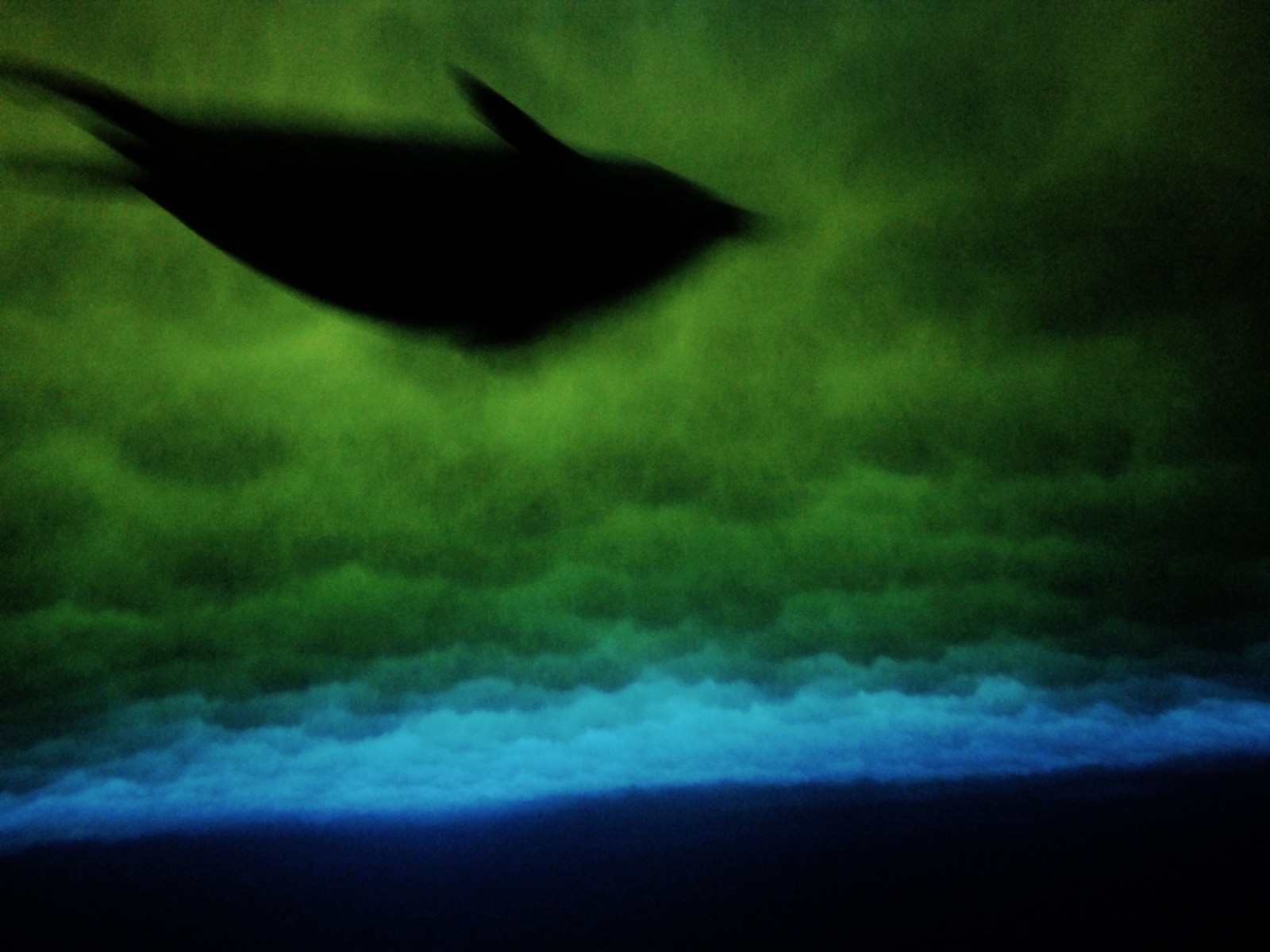
Silhouette of Walter against sunlight filtered through snow, sea ice and a thick sub-ice platelet layer which has colonised by thriving communities of algae (green shades), creating ‘marine meadows’. [Natalie Robinson | NIWA]
The foundation of a thriving marine ecosystem
Liquid ocean water permeates the spaces between the crystals, providing a quiescent and protective marine environment for tiny organisms to thrive. The concentration of primary productivity – which forms the base of the food chain – associated with the platelet layer is higher than for any other type of ice in the ocean. Most of this is in the form of algae which attach to the surfaces of the crystals and can hang down several tens of centimetres. In this way algal ‘meadows’ develop, performing a similar function of underpinning the ecosystem to that of terrestrial grasslands. The habitat formed by the lattice of ice crystals therefore provides the foundation for a highly productive marine food web in the ocean below. It’s this unique, and potentially critical, role of the platelet layer that we’re trying to understand. So here we are – six people in a shipping container in the middle of nowhere, deciphering a message of recent ice melt, coded into temperature and salinity changes in the ocean water. This container has a lift-out section of floor, so that after melting through the sea ice, we can access the ocean beneath our feet from the comfort of our warm shelter, whatever the weather.
A brand new capability for coring sub-ice platelet layers
Underwater imagery (see picture above) shows that these ‘marine meadows’ are not ubiquitous. There are areas where the algae are highly concentrated – almost swamp-like – which might be immediately adjacent to areas that are crystal clear. Documenting and understanding the cause of this spatial variability is the first step towards understanding this habitat, since it moderates how the ephemeral sub-ice platelet layers support the wider ecosystem. This question has led to the recent development of a new coring system, able to extract sequential sections of the ice crystals, along with the interstitial fluid and incorporated biology, without destroying its delicate structure. To see the coring system in action during its first ever deployments, watch this or this video.
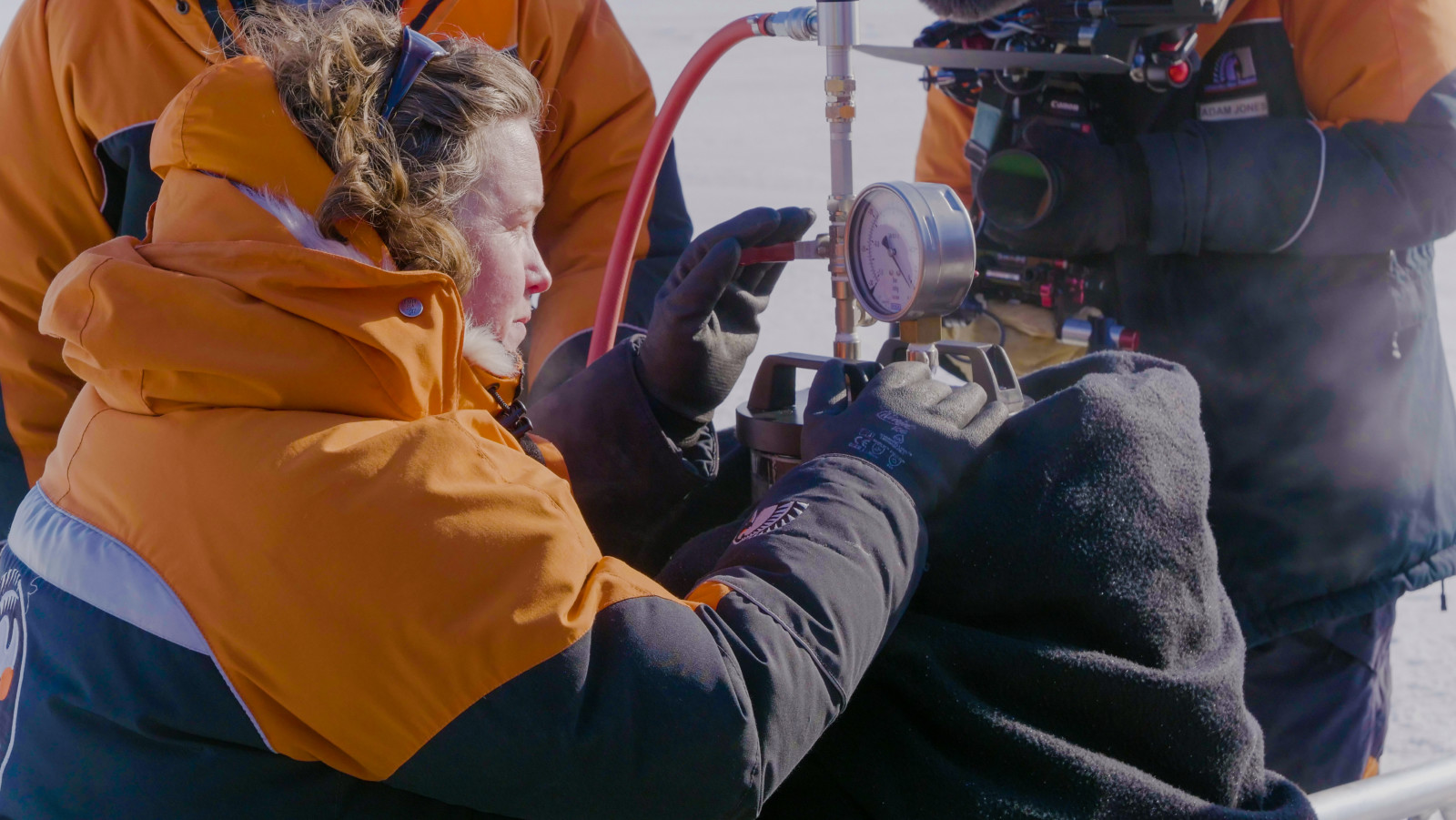
Me operating the vacuum system to extract a sample of sub-ice platelet layer. [Vanessa Wells | Elanti Media]
The New Zealand Antarctic Science Platform – Understanding Antarctica in a warming world
Looking further into the future, the ultimate aim of this work is to understand the Ross Sea ecosystem’s vulnerability to climate changes via shifts in thickness, timing, and spatial distribution of the platelet layer habitat itself. This will require combining the new knowledge gained from the observational programme with future climate scenarios drawn from numerical simulation of the Ross Sea and its global context. This integrated research all sits within New Zealand’s Antarctic Science Platform – a multi-institutional, inter-disciplinary programme designed to support capability expansion and long-term development of Antarctic science in New Zealand.
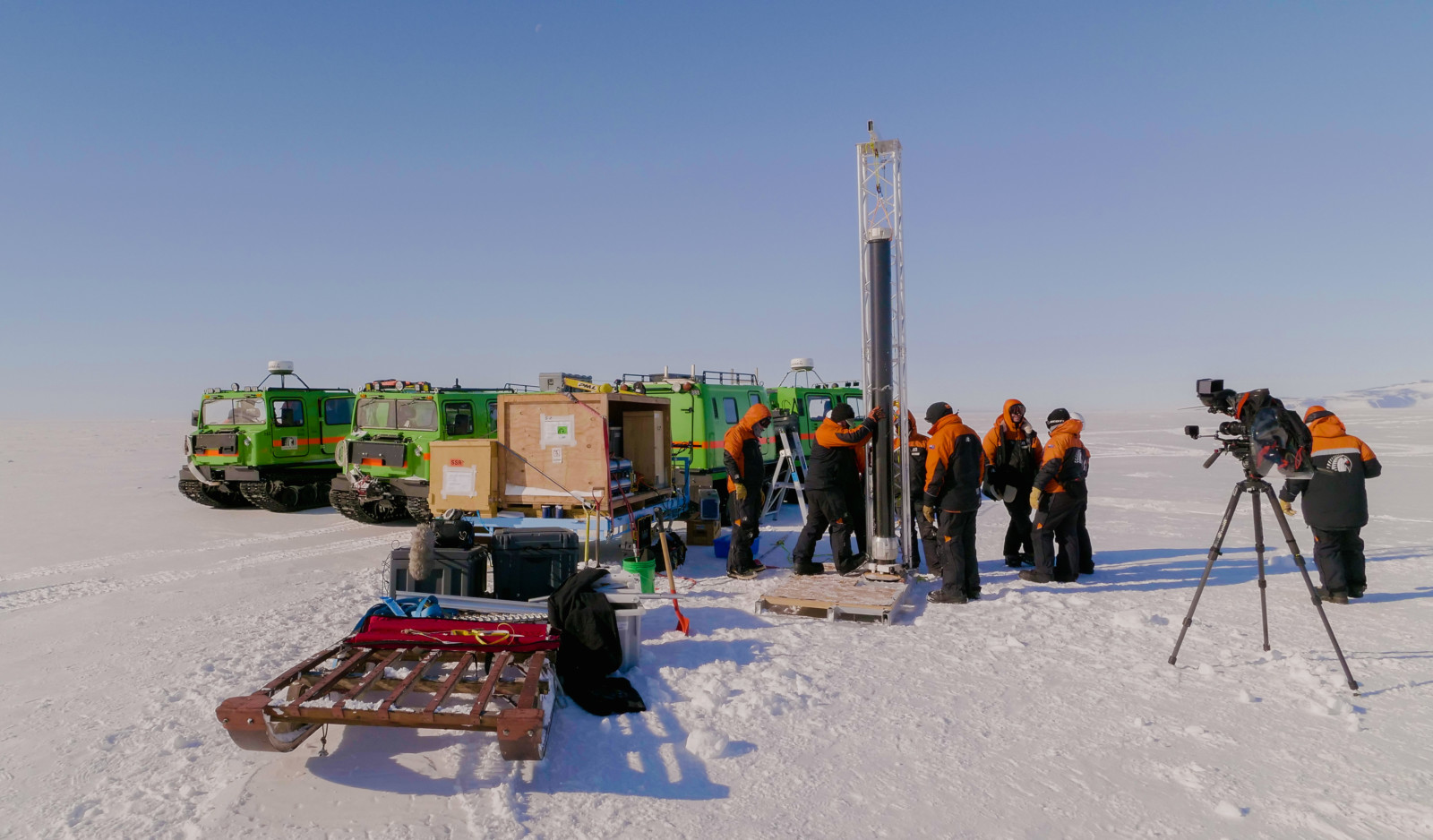
The sub-ice platelet coring system in use for the first time in McMurdo Sound, Antarctica, during the 2022-23 summer field season. [Vanessa Wells | Elanti Media]
What does the future hold?
The seal has been such a frequent visitor that we’ve nicknamed him ‘Walter’. Before we arrived, Walter had never breathed air warmer than zero degrees. It’s clear he likes it. He’s taken to sleeping jammed against the sides of the hole with his face under the flow of warm air, which we’ve been pumping downwards in order to keep the hole itself open. It is a privilege to work in this pristine wilderness, and to witness this sentient voyager of the deep so comfortable in our presence. In this untouched wilderness, he has never seen humans as a direct threat to his survival. But I find myself pondering the quiet threat that warming oceans, retreating sea ice, and disrupted marine habitats pose to Walter’s future generations, as well as my own.
Further reading
Previous blog about the platelet ice by Natalie
Previous Cryoblogs about sea ice: algae living in the ice, Arctic vs. Antarctic sea ice, and melting sea ice
Article about ice crystals formation beneath ice shelves and sea ice
Article about the variability, the distribution and growth conditions of the sub-ice platelet layer
Edited by Ugo Nanni and Loeka Jongejans
 Natalie Robinson is an Antarctic Oceanographer working for New Zealand’s National Institute of Water and Atmospheric Research. She is interested in all aspects of ice-ocean interaction and has a specific focus on basal melt of ice shelves generating supercooled water and platelet ice. She is passionate about making science accessible to all and participates in outreach efforts across a wide variety of platforms. She tweets as @PolarGirlNZ and her contact address is natalie.robinson@niwa.co.nz.
Natalie Robinson is an Antarctic Oceanographer working for New Zealand’s National Institute of Water and Atmospheric Research. She is interested in all aspects of ice-ocean interaction and has a specific focus on basal melt of ice shelves generating supercooled water and platelet ice. She is passionate about making science accessible to all and participates in outreach efforts across a wide variety of platforms. She tweets as @PolarGirlNZ and her contact address is natalie.robinson@niwa.co.nz.

